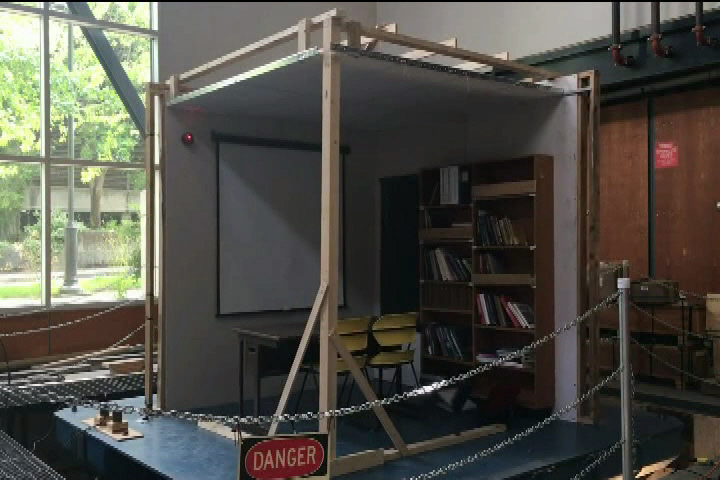WATCH: Vancouver engineers use a simulator to show the potential destruction in the Capital Region after a mega thrust earthquake. Ceilidh Millar reports.
University of British Columbia engineers are demonstrating what could happen if a large subduction earthquake struck the Capital Region.
Using an earthquake simulator called a ‘shake table’, faculty at UBC’s Earthquake Engineering Research Facility are looking at mega thrust earthquakes that could strike the province, similar to the 9.0 magnitude quake that struck Japan in 2011.
Engineers constructed a wooden model based off of a Victoria school, placing steel plates on top to mimic a second story.
“We have a full scale model of what we call a public school block,” said the project manager Martin Turek of UBC.
At the height of the shaking, the structure sways effortlessly and the sounds of snapping fill the the room.
“[The model] is a wood framed and retro-fitted school,” explained Turek. “[It’s] built and structured in such a way that we will see anticipated damage to specific earthquakes.”
They’re conducting a series of tests and hope their findings can help train engineers to quickly assess buildings post-disaster.
Findings could save lives
Earlier this year, the City of Victoria commissioned a study on how a large earthquake would impact buildings.
It’s the second study of its kind in the province and the findings were grim.
More than 5,000 buildings, or 39 per cent of the City?s building stock would be extensively damaged or destroyed in a 9.0 magnitude Cascadia earthquake.
While the structure used in UBC’s experiment did hold up, seismic engineer Graham Taylor said it would still be ‘red-tagged’ – meaning it could no longer be inhabited.
“When we’re accessing a building, we are looking on the inside and outside for indications of damage,” said Taylor.
“After the shake, we’re looking at how many nails pulled out. That’s why you’ve got to be careful when you inspect it because if you see this building from a distance you might say ‘it looks fine.'”
“What we’ve seen here today is we’ve pushed it harder beyond what the code is requiring and it did very well” explained Taylor.
The testing acts as a stark reminder of the potential damage of older buildings that haven’t been upgraded.
“There’s a huge benefit in upgrading buildings” said Taylor.
The results of this study will be included in the third version of the province’s Seismic Upgrade Guidelines, which is set to be published next month.
Proponents say these newest additions could make all the different for many in surviving an earthquake.





